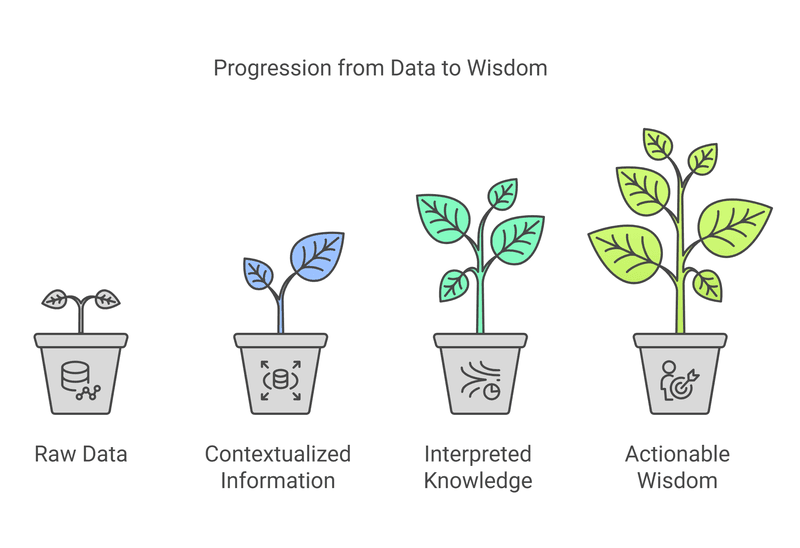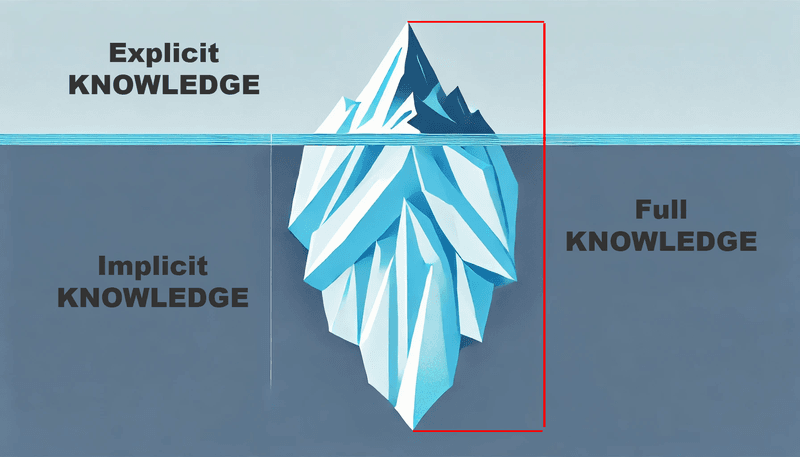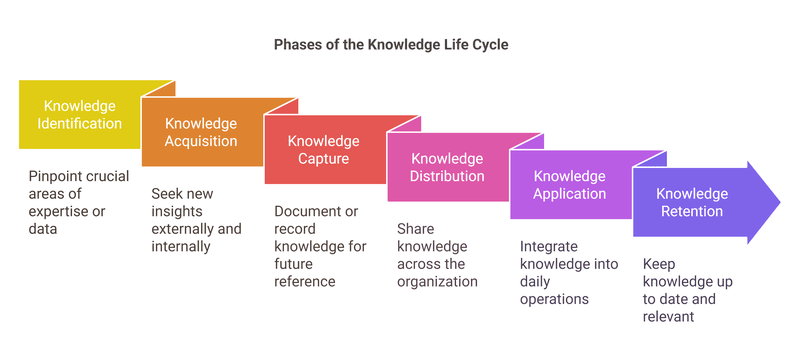Introduction: The Risk of Losing Crucial Knowledge
Imagine a long-serving employee, let’s call her Sarah, preparing for her last day at your small manufacturing firm. She has spent nearly a decade refining machine setup procedures, building customer relationships, and troubleshooting quirks that aren’t in any manual. Yet after she logs off for the final time, the insights she accumulated might vanish along with her. Some details may be scribbled on sticky notes, and a few might exist in scattered email threads. But, for the most part, Sarah’s know-how leaves the company the moment she does.
This scenario highlights a common, yet often overlooked, organizational challenge—knowledge loss. In a rapidly shifting market, SMEs (small and medium-sized enterprises) face steep competition and can’t afford to lose critical expertise. Without structured knowledge management, employees may repeat mistakes, reinvent solutions, and waste resources. The outcome is more than a brief stumble; it can be a crushing blow to efficiency, innovation, and even employee morale.
However, there is a silver lining. By implementing a well-thought-out knowledge management system, you can capture, nurture, and share the collective wisdom that keeps your business competitive. This article explores the fundamentals of knowledge management: from understanding how raw data becomes actionable insights, to creating a culture where knowledge flows freely yet securely. Along the way, we’ll examine real-life examples from manufacturing and construction, offering you a blueprint to implement knowledge management in your own organization.
The Knowledge Hierarchy: Transforming Data into Wisdom
1. From Raw Data to Usable Knowledge
In the realm of knowledge management, not all information is created equal. There is a progression—often referred to as the knowledge hierarchy—that takes you from raw data to meaningful wisdom. If you envision each step as a rung on a ladder, the ultimate goal is to convert scattered facts into actionable strategies.
- Raw Data
These are the unprocessed facts and figures that float around in your business. Examples might include a spreadsheet with daily production counts or temperature logs from a warehouse. On their own, data points are seldom insightful. They need context. - Contextualized Information
When you place raw data in context—linking it with a timeframe, a specific process, or a comparison to past performance—it becomes information. For instance, those production counts might be paired with shift schedules, allowing you to see correlations between team composition and output. - Interpreted Knowledge
Once you interpret the information, you begin to form knowledge. At this stage, you glean patterns or insights—such as discovering that a certain staff configuration leads to better quality control. This knowledge has the potential to guide decisions. - Actionable Wisdom
Finally, you move beyond mere interpretation and apply this knowledge to solve problems or make strategic moves. Wisdom is the ability to synthesize multiple knowledge areas to address complex challenges. For example, you might reorganize shifts or invest in employee training based on these patterns, resulting in tangible improvements.
2. Defining Each Layer
- Raw Data: The “what.” Typically unprocessed and lacks context.
- Contextualized Information: The “why” and “when.” Data placed in an interpretive framework.
- Interpreted Knowledge: The “how.” Understanding implications and drawing reasoned conclusions.
- Actionable Wisdom: The “what now.” Using interpreted knowledge for informed decision-making and innovation.

3. Transformations in Practice
Each step of this hierarchy involves a transformational process. You gather raw data, structure it with context, analyze it for patterns, and finally use it to guide real-life actions. Knowledge management underpins these transitions, ensuring that your team isn’t stuck on lower rungs of the ladder but can effectively climb to higher-value insights.
Types of Knowledge
1. Explicit Knowledge
Explicit knowledge is the most recognizable form—it’s documented, easily stored, and typically found in manuals, reports, or knowledge bases. Think of written procedures, policy documents, or how-to videos. Because explicit knowledge is straightforward to share, it often forms the backbone of knowledge management systems in SMEs.
- Examples:
- Standard Operating Procedures (SOPs) for machine operation
- Employee handbooks detailing company policies
- Digital repositories containing product specifications
- Company Practice: Many SMEs use wiki platforms or cloud-based systems (like SharePoint, Confluence, or DokuWiki) to keep track of these documents.
2. Implicit Knowledge
On the other hand, implicit knowledge (often referred to as tacit knowledge) resides in people’s heads. It’s the expertise you pick up through hands-on experience, intuition, and years of trial and error. Unlike explicit knowledge, implicit know-how isn’t always easy to put into words. It can include a veteran team member’s gut feeling for when a machine is about to jam or how a project manager navigates vendor negotiations.
- Challenges:
- Difficult to capture or formalize
- Often overlooked because it’s “just how we do things”
- Strategies for Collection:
- Mentoring or buddy programs
- On-the-job training sessions
- Recorded interviews or demonstrations
If explicit knowledge is the readily visible tip of the iceberg, implicit knowledge is the massive structure beneath the water’s surface. You need both for a successful knowledge management initiative.

The Knowledge Life Cycle: From Identification to Preservation
A) Phases of the Knowledge Life Cycle
Effective knowledge management recognizes that knowledge isn’t static. It goes through a continuous loop of discovery, sharing, and updating. Understanding this life cycle helps organizations avoid stagnation.
1. Knowledge Identification
- Pinpoint crucial areas of expertise or data.
- Determine what the organization can’t afford to lose if key employees leave.
2. Knowledge Acquisition
- Seek new insights externally (e.g., from consultants, research, or training) and internally (through brainstorming, feedback sessions).
- Assess which forms of knowledge have immediate relevance.
3. Knowledge Capture
- Document or record knowledge for future reference.
- Use structured approaches like mind maps, wikis, or Q&A repositories.
4. Knowledge Distribution
- Share knowledge across the organization, ensuring the right people have access.
- Implement role-based permissions where necessary.
5. Knowledge Application
- Integrate knowledge into daily operations and decision-making.
- Encourage employees to use new insights in real projects.
6. Knowledge Retention
- Keep knowledge up to date.
- Archive or retire outdated information.
- Maintain continuity by updating processes.

B) Practical Implementation in SMEs
Because SMEs often have limited staff and budgets, they benefit from nimble, low-cost strategies for each phase. For instance:
- Identification & Acquisition: Simple methods like interviews or departmental reviews can highlight critical knowledge gaps.
- Capture & Distribution: A shared folder on Nextcloud or a lightweight wiki might be enough for storing and sharing routine updates.
- Application & Retention: Short training videos or lunch-and-learn sessions can help employees apply knowledge quickly, while a periodic review ensures the knowledge remains relevant.
Personal Experience: At a small accounting firm I consulted for, they had a treasure trove of spreadsheets detailing shortcuts, best practices, and client-specific quirks. These existed haphazardly on individual desktops. By creating a central repository, they captured these scattered files, gave each one context, and distributed them to all accountants. Productivity soared because no single person was “gatekeeper” of crucial templates anymore.
Real-World Examples
1. Case Study 1: Manufacturing Firm
A mid-sized machine-building company found that critical design ideas lived solely in the minds of their senior engineers. When these engineers left or retired, newer employees had to reverse-engineer solutions. Recognizing the threat, management introduced:
- Recorded Debriefings: Every completed project was followed by a 15-minute video debrief uploaded to a company wiki.
- Mentorship Pairing: Senior engineers were paired with junior staff to transfer hands-on tips, ensuring tacit knowledge didn’t evaporate.
- Outcome: Reduced ramp-up time for new engineers, plus a reference library of real-world problem-solving sessions.
2. Case Study 2: Construction Business
A local construction firm struggled with knowledge continuity. Site managers frequently rotated among projects, leading to missed details and repeated mistakes. They implemented:
- Knowledge Maps: A visual matrix linking project challenges (like permit hurdles, material constraints) to the employees who solved them in the past.
- Systematic Handover: Departing site managers created a brief “project closure” document, outlining site-specific nuances.
- Outcome: Fewer costly errors, smoother transitions, and stronger morale because employees felt their insights mattered.
These examples prove that knowledge management needn’t be expensive or complicated. With a bit of structure and employee buy-in, SMEs can keep invaluable insights within reach.
Practical Steps for Implementing Knowledge Management
A. Strategic Considerations
1. Define Knowledge Goals
- What are you hoping to achieve? Faster onboarding? Reduced errors? More innovation?
- Setting clear targets—like reducing project rework by 20%—aligns efforts with measurable outcomes.
2. Assess Current State
- Conduct a knowledge audit. Identify the biggest gaps: Is your documentation outdated? Are certain topics only in people’s heads?
- This step clarifies which tools or methods will have the greatest impact.
3. Choose Tools and Platforms
- Think about user-friendliness, cost, and required features.
- Ensure the chosen solution aligns with your staff’s tech expertise.
4. Begin With Small Pilots
- Launch a limited rollout in one department or for a specific process.
- Refine before scaling.
B. Recommended Tools
- Nextcloud
- A secure, self-hosted alternative to major cloud platforms.
- Great for file sharing, version control, and basic collaboration features.
- DokuWiki
- A lightweight wiki system with straightforward setup and no database overhead.
- Ideal for creating internal documentation and knowledge bases.
- Mattermost
- An open-source messaging platform similar to Slack.
- Encourages informal Q&A and day-to-day knowledge sharing.
Personal Experience: While working with a small consultancy, we implemented a Mattermost channel specifically for “Client Insights.” Beforehand, each consultant kept notes on local drives. After rolling out the new channel, the firm noticed fewer repeated questions during client pitches. Junior consultants quickly tapped into a pool of shared experiences, speeding their learning curve.
The Benefits of Knowledge Management
Organizational Advantages
1. Boosted Efficiency
- Centralized documentation cuts down on time wasted searching for answers.
- Fewer repetitive errors when lessons learned are accessible.
2. Enhanced Innovation
- When employees can easily find relevant background info, they can spend more energy on creative problem-solving.
- Cross-pollination of ideas becomes easier when knowledge is shared openly.
3. Minimized Risk
- Key expertise doesn’t vanish with employee turnover.
- Documentation and stored procedures act as continuity safeguards.
4. Improved Employee Engagement
- People value being part of a learning organization that respects their contributions.
- Opportunities to learn from mentors or best-practice libraries foster professional growth.
Conclusion and Call-to-Action
A. Core Message
In a world of rapid change, failing to harness knowledge management can leave your SME vulnerable to errors, inefficiency, and high turnover. By recognizing how data evolves into actionable insights—and by capturing both explicit and implicit knowledge—you create a vibrant learning culture. Leveraging a life cycle approach ensures knowledge remains current, while practical tools like Nextcloud, DokuWiki, and Mattermost keep it accessible. As seen in real manufacturing and construction examples, knowledge management is about retaining corporate memory, fueling innovation, and staying resilient.
B. Invitation to Act
Ready to protect and grow your organization’s knowledge assets?
- Reflect on your biggest knowledge gaps. Which processes would crumble if a certain employee left?
- Pilot a simple knowledge-sharing initiative—perhaps a wiki for standard procedures or a mentorship pairing.
- Engage with peers. Ask for feedback, iterate, and keep refining your approach.
In the end, knowledge management is not a luxury—it’s an essential pillar for any forward-thinking SME. Don’t let irreplaceable expertise walk out the door. Take the next step and start building a robust, sustainable knowledge ecosystem today.
#KnowledgeManagement
#SMELeadership
#BusinessContinuity
#DigitalTransformation
